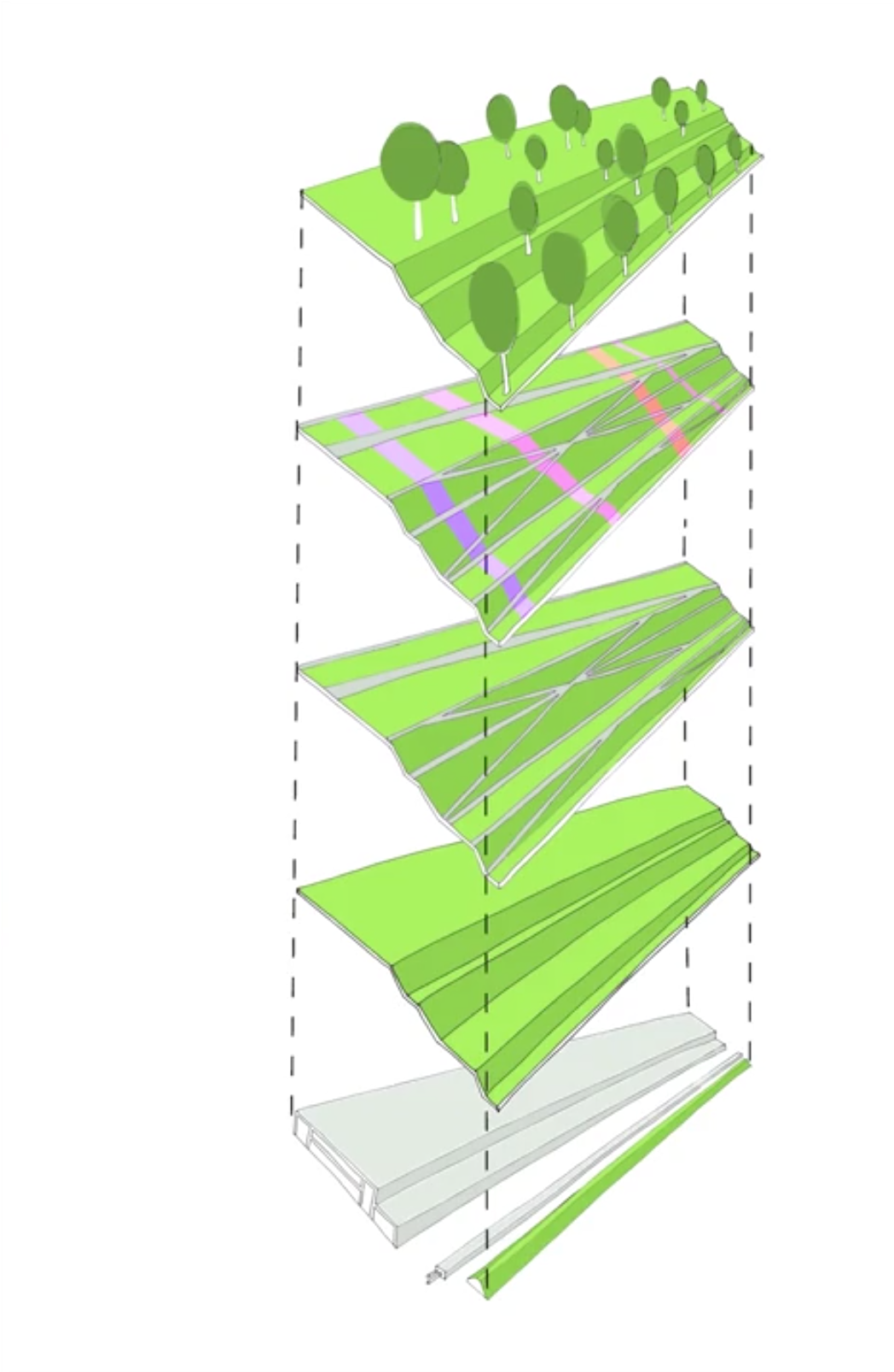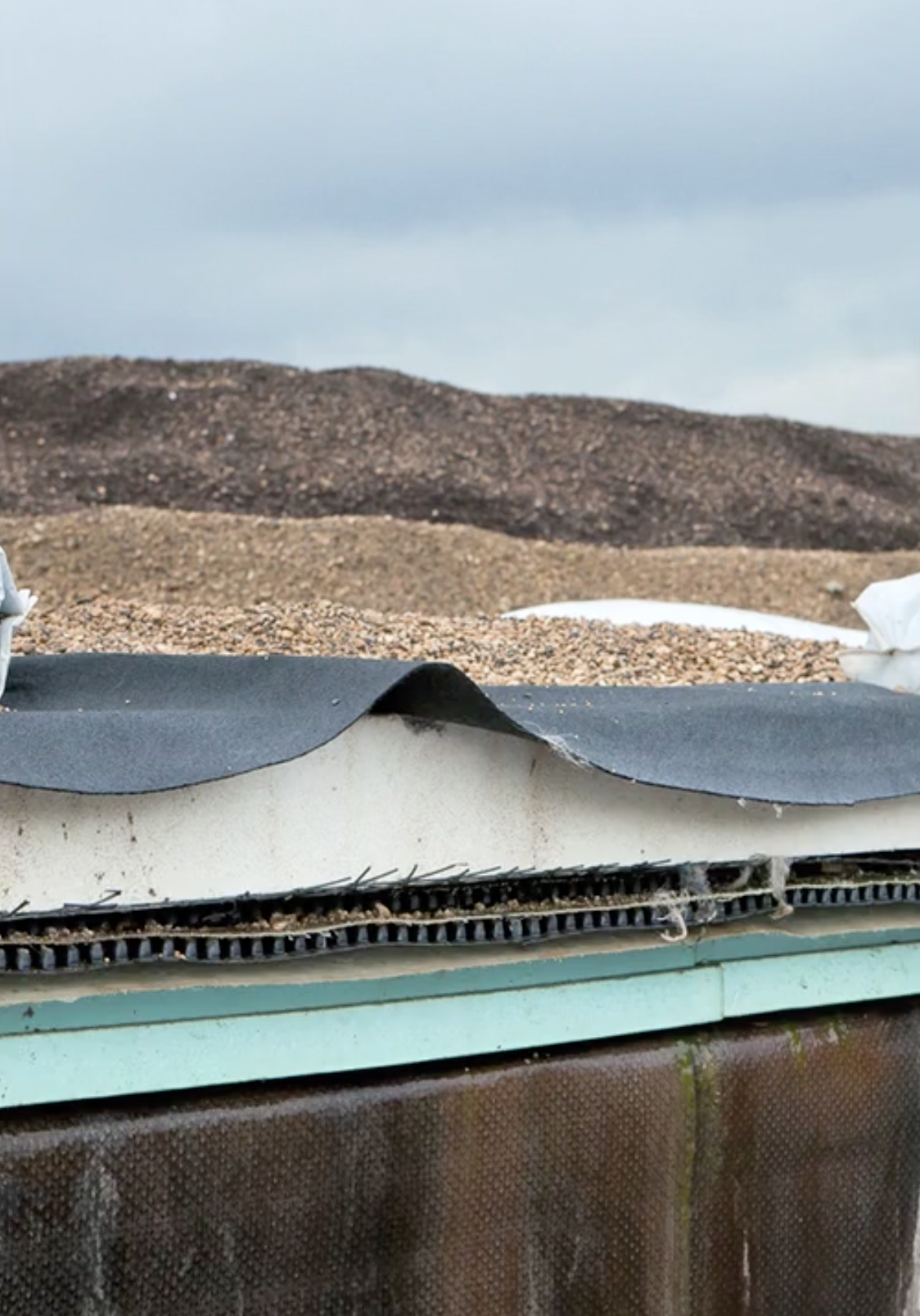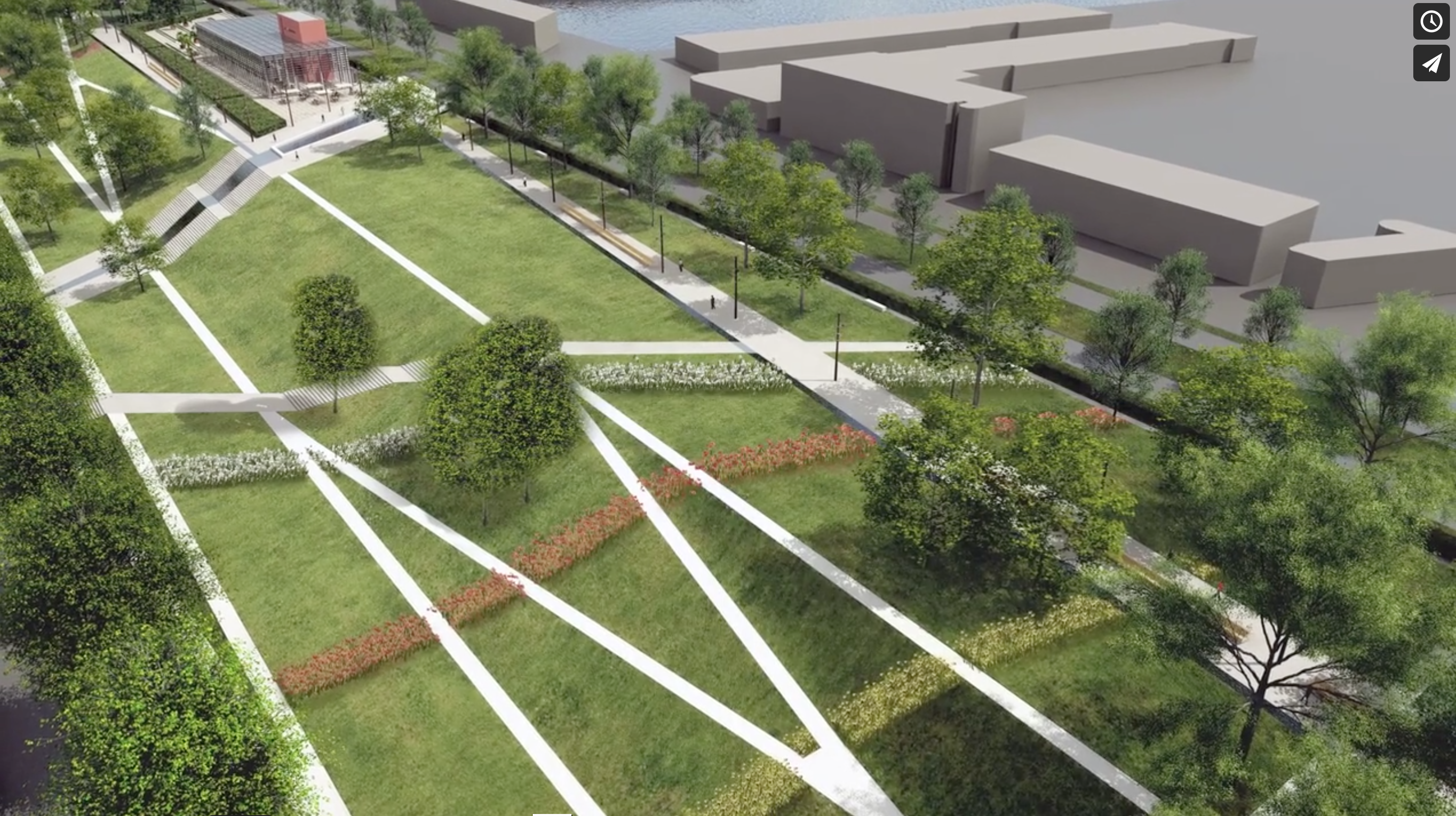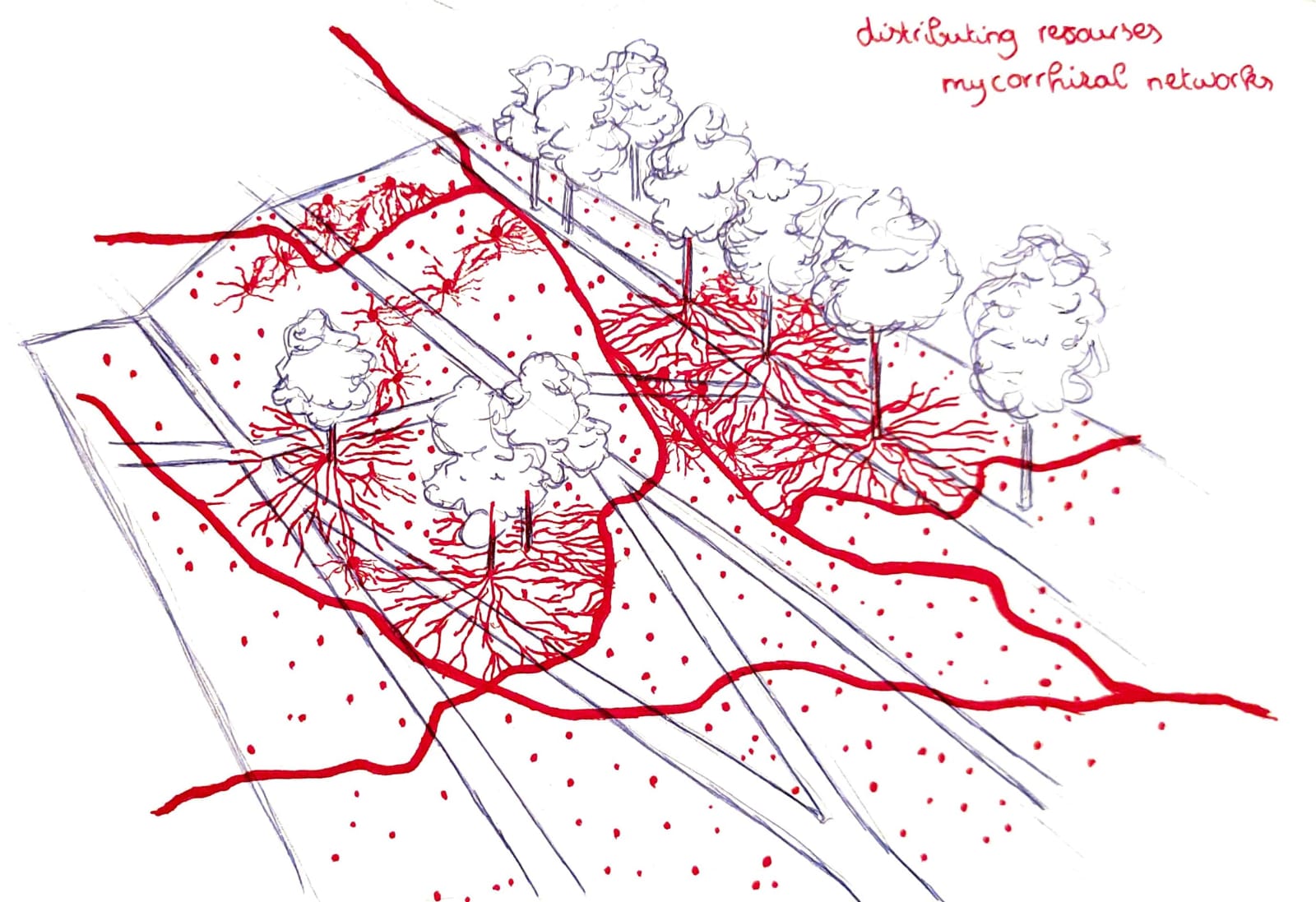Darkpark
INVESTIGATION DAKPARK
What does it offer ?
- Buurttuin, a shared garden between locals, providing work and leisure but also food.
- Parent/kids garden club, learn about veggies how to plant but also to cook them.
- Various organised workshops, all intended to increase knowledge about nature.
- Playing station for kids
- Barbecue area
- Groengroup, volunteer that keeps the park clean and therefore gain nature knowledge and save the government some cost.
- Flower garden for bees and insects.
- Sheep club, a space that welcome sheep for most part of the year.
1 meter thick soil, water proof roof
why was it built ?
- The residents of this area asked for a park
- Rotterdam needs parks to store water and keep the city dry
- Helps municipality's economics, a park makes this area more liveable therefore prices of house go up
HOW DOES DAKPARK AND CITY LIFE INTERACT?
Dakpark has strict opening hours - 7:00 A.M - 23:00 P.M
Residents have established a foundation in 2013, the Dakpark foundation, and have been active in various ways since the construction as volunteers.
Activities and workshops, guided tours and lectures are given to bring people, nature and cultures together. For human it is a place to relax, come together, have fun and escape from the grind of the busy city.


HISTORY
The location of Dakpark used to be a rail yard with fences around it. Rotterdam is one of the most densely populated cities in the Netherlands.
A city where more than 175 nationalities live together.
When the rail yard became vacant in 1998, the residents of that area stood up for a park to be created for more greenery in the neighbourhood.
The municipality of Rotterdam and port companies were very keen to get port activity and workspace here in order to create more employment, but residents were urged to create a green park for the area. As a solution to merge this with each other, that's how the concept of Dakpark came about.
RESOURCES
https://archief.nederlandwordtanders.nl/projecten/dakpark-rotterdam/
https://www.nieuwbouwthehudsons.nl/nieuws/van-oude-spoorlijn-naar-groots-park
https://www.dakparkrotterdam.nl/over-ons/
https://www.santenco.nl/portfolio_page/dakpark/
https://www.facebook.com/dakpark/posts/3319182671449790
https://www.dakparkrotterdam.nl/wat-en-waar/?fbclid=IwAR3EyHLqI513lJgHAAcQa5QyKrDPS54AbdW5rQrnEPLt8VK870INaht_WhI#Planten
https://www.dakparkrotterdam.nl/wp-content/uploads/2020/07/Bomen-op-Dakpark-Rotterdam.pdf
https://www.dakparkrotterdam.nl/wp-content/uploads/2020/09/Plantenlijst-Kruidentuin.pdf
https://www.nieuwbouwthehudsons.nl/
WHO ARE THE INHABITANTS?
TREES
Anna Paulownaboom / Laurierkers / Gewone Vlier / Gewone Vlier / Trosvlier / Katwilg / Olifantengras / Pijnboom / Steeneik / Drietandesdoorn / Veldesdoorn /
Esdoorn / Papieresdoorn / Franse Esdoorn / Japanse Esdoorn / Noorse Esdoorn / Perzische Slaapboom / Trompetboom / Libanon Ceder / Kweepeer / Vederbeuk / Zwarte Beuk / Notenboom / Amberboom / Valse Tulpenboom / Paraplu Magnolia / Wilde Kers / Mantsjoerije Kers / Sierkers / Chinese Vleugelnoot / Zilverlinde.
HERBS & SPICES
Lavas / Bergamotkruid / Stengelui / Wilde Marjolein / Grijs Kattenkruid / Roomse Kervel / Dragon / Bergbonenkruid / Kamille / Fraaie Vrouwenmantel /
Citroenmelisse / Tijm / Bieslook / Salie / Jeneverbes / Laurier.
ANIMALS
wild bees / beetles / butterflies / ants / mosquitoes / wasps / flies / worms / beetles / ladybugs / caterpillars / ticks / spiders / crickets.
swallows / sparrows / gulls / magpies / tit / blackbirds / ducks / geese / pigeon / nuthatch / squirrel.
Artificial: dogs / cat / rabbit / children.



What makes each park specific? Who are the inhabitants? How do park and city life interact/clash with each other?
What is notable about this park is how tied into its surroundings it is. First, perhaps most obviously, it is perched on top of a 1200 meter long building containing a variety of shops and services. Its therefore next to or surrounded by the city but rather on top of it. Whilst there no obvious attempts to tie in the shopping experience below into the park above, the constellation of greenspace and commercial city space still feels more intertwined. From an aesthetic point of view there is also a lesser contrast between the park and the surrounding city than we are used to. We would expect to see natural, organic and random shapes within the space of the park and more clear lines and geometric shapes outside of the park. However, the aesthetic of the park is very sanitary, with geometric shapes, straight lines and clear delineations between areas. Surfaces such as the grass and walking paths seem very treated and end abruptly rather than flowing into one another. Similarly the perimeter of the park is marked by straight lines. When there are spaces dedicated towards natural growth of things such as herbs and flowers, these are, again, clearly delineated, limited to a certain area, and squared off.
Aside from a slightly different colour palette, the park and its city surroundings do not differ greatly from an aesthetic point of view (when compared to other parks/cities). Therefore, the contrast between the areas is less stark than one would expect. As a result, they do not seem to be distinct from one another. This is problematic if the intention of the park is to provide a place of refuge from city life (though we do not know if this is the case).
- We were surprise with the park's look, we were disappointed. It's very flat a lot of grass not so much trees and bushes or other plants. All plants are organised very neatly in geometric forms and shapes, looks very handmade.
- We have noticed that there are a lot of little rocks in the grass
- Looks more like a garden then a park
- The shared garden area is very small, there are only few spaces available and it's not very well maintained either.
- 5/7 chickens with their house, there are no barriers for them they can run freely in the park but stay around their coop.
- One bee's hive
- Tube installations which produce a smell to push away the rabbits
- Big greenhouse building which is actually a restaurant, that is very fun
- Other animals or insect seen in the park, we saw little brown and black birds as well as seagulls, a cat, dogs, not really saw any insects.
- The flower garden was also really sad, but I think that's because it's not the season yet.
- Generic benches, lamps and bins
- Kids playground, very generic again, was closed when we were there
Visit of the park
Visual Research Park
Idea : Mycorrhizal network
Fungi's connect plants to one another and these associations might be ecologically important.
Fungal threads link nearly every tree in a forest — even trees of different species. Carbon, water, nutrients, alarm signals and hormones can pass from tree to tree through these subterranean circuits.
How do these plants interact?
plant communication and behavior - to - human communication and behavior?
For a forest as well as a human city: It’s a vast, ancient and intricate society.
I am questioning, how would a park, as one living creature, (because all the plants and trees are fully connected with each other through the network of fungi's) experience us humans visiting? Are we intruding their privacy?
Trees perceive lots of things. Sound of water through roots, sound of bee wing's beats.
Western culture, in particular, often consigns plants to a liminal space between object and organism.
It is precisely this ambiguity that makes the possibility of plant intelligence and society so intriguing
COMPARE THIS FUNGUS NETWORK TO THE HUMAN BRAIN?
RESOURSE
https://en.wikipedia.org/wiki/Mycorrhizal_network
https://www.nytimes.com/interactive/2020/12/02/magazine/tree-communication-mycorrhiza.html
https://www.youtube.com/watch?v=Un2yBgIAxYs
Is cooperation as central to evolution as competition?
What if in 2050 we use this mushroom network to fairly spread and share our resources around a country, a continent or even the world
What if in 2050 we create a similar type of network in human scale to once again fairly share resources.
- Utopia : everyone is healthy and happy, no more poverty and famine, everyone is equal in terms of resources
- Dystopia : The people who are in charge of this network will use it to make themself the richest and most
powerful people in the world, therefore is that fair ? we will be fully controlled and dependent of this people
In 2050 the nature will control and command us, this mushroom network will develop and mutate in the way that now they can also help humans but it's really mad about the fact we injured the planet and its nature that it makes us it slaves to restore nature.
Speculative
scenarios
Concerns,
Questions,
Thoughts,
How deep does this mushroom network go in the ground ?
How much space does it needs to be fully in function ?
How far apart can an organism be to still be part of this network ?
Does concrete, roads, buildings interfere or cut this network, making park isolated
Or because there is ground under all this concrete, this mushroom network can travel underneath the city and connect all the parks together ?
Are all forests and parks in a country connected with this network ?
How does a park experience human visit ?
How does this network experience humans interfering and disrupting nature ?
Disrupting the mushroom network's privacy
Can this network adapt and overcome human destruction ?
Are humans part of this ecosystem and therefore our interruptions are needed for this network to grow and develop ?
Or somehow this network tries to push us away but we don't realise it
dakpark is artificial and deeply tied to the surroundings of the city. there is not so much contrast from the city to the park. they are both sanitized, geometric in shape and much 'man-made'. How does nature, with its strong free-will of growing, manage to be framed like this?
Maybe the park isn't that artificial and ''framed'' as it appears to the naked eye. Mushrooms connect a large, providing, network undergrounds. A network that perhaps goes beyond the borders of concrete around the park. A network human could learn from in their way of shaping society.
In 2050 plant intelligence and society are taken seriously, more investigated and used to guide human society.
What defines a mushroom?
A mushroom is the fleshy, spore-bearing fruiting body (reproductive structure) of a fungus. They are typically found above ground on soil or on it’s food source like trees or plants. Mushroom is also used to describe the entire fungus with a fruiting body.
A fungus is a eukaryotic organism that digests its food externally and absorbs nutrient molecules into its cells. Mushrooms are unique because they differ from bacteria, which do not have a cell nucleus; they are not a plant because mushrooms do not make their own food through photosynthesis; and they differ from animals because they are not mobile and do not absorb nutrition externally. Mushrooms are, however, related to other fungi organisms such as, yeasts, molds, and mildews.
Many species of mushroom seemingly appear overnight, growing or expanding rapidly. In actuality, all species of mushrooms take several days to form. They initially form a small fruiting body, called the pin stage. When they are slightly expanded, they are called buttons. mushroom initially form a minute fruiting body, referred to as the pin stage because of their small size. Slightly expanded, they are called buttons, once again because of the relative size and shape. Once such stages are formed, the mushroom can rapidly pull in water from its surroundings and expand, mainly by inflating it’s cells.

CONCEPT
It is the year 2050. Humans have finally admitted to themselves that their egotistical nature and resulting constant competition with one another is incompatible with the ideals of a fair society and a healthy natural world. Having tried and failed to delegate the task of resource distribution to policymakers and elected officials, humans, in a moment of atypical intelligence and humility, turned to the natural world for answers. An answer was found in mycorrhizal networks. Perfected within the natural world, humans appropriated this biotechnology, with its capacity for neutral, “need-based” distribution of resources, and applied it to their cities.
A network of mycorrhizal mushrooms therefore pervades subterranean Rotterdam, supplanting the legacy networks such as the water, waste and electrical grid. Essential resources for the city’s inhabitants such as energy, water, food and information are now no longer concentrated by greed but distributed by need in an equal way. As the city’s distributing network is biological, the natural world is no longer an afterthought but rather an integral part of the system. Resources are rationed in respect to planetary boundaries and waste, where it has not been eliminated, its returned to nodes which can process it. The nodes in this network are many, both human and plant. Parks function as nerve centres for this networks where information regarding the resource needs of the different nodes are processed and distribution is planned.


MAPPING OF THE MYCORRHIZAL NETWORK DISTRIBUTING RESOURCES IN ROTTERDAM
THE UNDERGROUND NETWORK
PARKS AS MAIN NODES
Possible idea: a HUGE monument that really contributes to the growth and wellbeing of fungus through its material
= All parks in Rotterdam
Interesting topics after feedback
Our project opens up new conversations and questions about:
- Currency
- The contemporary political system
- Human behaviour and values
Interesting questions:
Can you choose to be independent of the fungi system?
Will this mycorrhizal network work as a communist system?
Who are the providers and what are their agenda?
What if the fungi get greedy? Can they get greedy?
What if the fungi is part of the municipality of Rotterdam,
interacted with as a person?
INTERESTING
https://www.nationalforests.org/blog/underground-mycorrhizal-network
https://www.youtube.com/watch?v=Un2yBgIAxYs
https://www.vpro.nl/programmas/tegenlicht/kijk/afleveringen/2019-2020/in-de-ban-van-het-bos.html
https://jeroenvanloon.com/permanent-data/
https://www.youtube.com/watch?v=N3pUfj639hM
IDEA
Technological 'dome' / monument for human to interact with the natural system.
This monument has mapping on it (smart-technology) which shows all connections of the day and the quality of the network, sources and grounds.
-SEMI TRANSPARENT (as the shell of eggs)
-sound connection to humans (?)
concept designs
Story line
1 -Problems of 2020, showing issues
- Money problems
- waste
- How does nature feel
2- Present mushroom network
- show what is known, a simple mushroom or plant and dive in into the ground showing the network
- show the underground network for people to understand what it is
3- The park and the city
- Park with big mushroom
- Map, zoom out to entire city
4- Cables
- Zoom in into the cables
- cables visuals
5- Following cable into someone's house
- cables feeding the family
- cables bringing water flow
- cables bringing light
6- Offering stage / park
- cross section of park, cables connecting park and coffins
7- Conclusion / park
- visual of the park, maybe the same as 3 ( park with big mushroom )
Charli
Manon
Manon
Charli
Rosali
Rosali